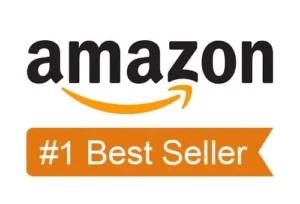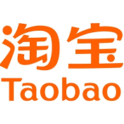 亚马逊导购/好书推荐
亚马逊导购/好书推荐  卑诗省当天新盘
卑诗省当天新盘  读新闻学外语
读新闻学外语
竞争并未止步于卫星服务领域。2022 年,SpaceX 挑战 Globalstar 对重要无线频谱的使用权,加剧了冲突。马斯克的公司称,Globalstar 未能充分利用已分配的频谱,并试图阻止 SpaceX 等竞争对手进入市场。
在 iPhone 14 2022 年发布前的几周,埃隆·马斯克向苹果提出了一项大胆的报价,此举引发一场高风险的卫星连接争夺战。这位 SpaceX 创始人提议以 50 亿美元的价格将 Starlink 卫星服务引入 iPhone,并警告称,如果遭到拒绝,将导致一个竞争系统的出现。苹果拒绝了这一提议,此后冲突愈演愈烈。
埃隆·马斯克的提议既大胆又昂贵:SpaceX为iPhone提供卫星连接,条件是SpaceX支付50亿美元的首付款,并在18个月的独家经营期后每年支付10亿美元。苹果首席执行官蒂姆·库克拒绝了这一提议。相反,苹果选择与规模较小、能力较弱的卫星供应商Globalstar合作。
苹果承诺斥资17亿美元支持Globalstar的卫星网络,其中11亿美元将用于建造和发射新卫星。尽管苹果内部对Globalstar的技术老化和升级潜力有限的担忧,但这项合作仍在继续推进。据报道,克雷格·费德里吉和阿德里安·佩里卡等高管对此表示怀疑,警告称苹果对Globalstar的依赖可能会招致监管审查,甚至可能将该公司归类为电信运营商。
马斯克毫不犹豫地兑现了他的威胁。SpaceX与T-Mobile合作推出了Starlink Direct to Cell服务,这项服务使包括iPhone在内的智能手机能够通过T-Mobile网络访问卫星通信。但竞争并未止步于竞争服务领域。SpaceX还对Globalstar对苹果卫星功能所使用的关键无线频谱的权利发起了法律挑战。马斯克的团队认为,Globalstar未充分利用其频谱,并试图阻碍该领域的创新。如果SpaceX胜诉,苹果可能会被迫为其卫星功能寻找新的合作伙伴或新的频率。
随着苹果加倍投入其Globalstar联盟,以及马斯克进一步推动Starlink进军移动市场,太空智能手机连接的竞争正在升温。最初被否决的提议如今已成为一场争夺主导地位的全面战斗——这场战斗可能会重新定义智能手机在地面网络不足的情况下如何保持连接。
The rivalry didn’t end with the satellite services. In 2022, SpaceX escalated the conflict by challenging Globalstar’s rights to an important wireless spectrum. Musk’s company argued that Globalstar had failed to fully utilise the spectrum it had been allocated and was trying to block competitors like SpaceX from entering the market.
In the weeks leading up to the iPhone 14’s 2022 launch, Elon Musk approached Apple with an audacious offer that would ignite a high-stakes battle over satellite connectivity. The SpaceX founder proposed a $5 billion deal to bring Starlink satellite service to iPhones, warning that a rejection would lead to the creation of a rival system. Apple declined—and the conflict has only intensified since.
Elon Musk’s offer was as bold as it was expensive: SpaceX would power satellite connectivity on the iPhone in exchange for a $5 billion upfront payment and $1 billion annually after an 18-month exclusivity period. Tim Cook, Apple’s CEO, declined. Instead, Apple chose to work with Globalstar, a smaller and less capable satellite provider.
Apple committed $1.7 billion to support Globalstar’s satellite network—$1.1 billion of which would go toward building and launching new satellites. Despite concerns within Apple about Globalstar’s aging technology and limited upgrade potential, the partnership moved forward. Senior executives like Craig Federighi and Adrian Perica reportedly voiced skepticism, warning that Apple’s reliance on Globalstar could attract regulatory scrutiny, possibly even classifying the company as a telecom carrier.
Musk wasted no time delivering on his threat. In partnership with T-Mobile, SpaceX launched Starlink Direct to Cell, a service enabling smartphones—including iPhones—to access satellite-powered communication via the T-Mobile network.But the rivalry didn’t stop at competing services. SpaceX also launched a legal challenge targeting Globalstar’s rights to key wireless spectrum used by Apple’s satellite feature. Musk’s team argued that Globalstar was underutilising its spectrum and trying to block innovation in the sector. If SpaceX prevails, Apple could be forced to find new partners—or new frequencies—for its satellite features.
As Apple doubles down on its Globalstar alliance and Musk pushes Starlink further into the mobile market, the competition for space-based smartphone connectivity is heating up. What began as a rejected proposal is now a full-scale battle for dominance—one that could redefine how smartphones stay connected when ground-based networks fall short.












